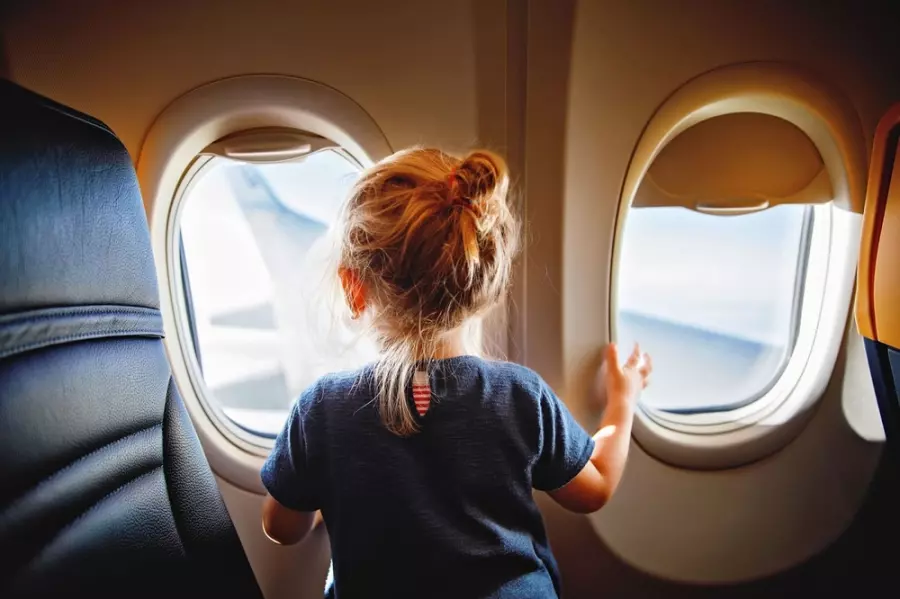Change language
Traveling by plane with children: tips and recommendations for a successful flight
July 26, 2024

If you are about to pack your bags and embark on an adventure with your little one, then you need to read this article first. We have prepared a complete guide for you, full of practical tips and recommendations to make traveling by plane with children stress-free.
When can a child fly?
When can a child fly? This is a frequent question of parents who want to travel by plane with their little one. Well, the answer may vary depending on the airline's policy.
In general, airlines allow babies to fly from one week of age. However, some airlines prefer to be more cautious and accept babies only if they are over two weeks old. So if you are wondering "When can you travel with a baby?", it is recommended to check the specific policy of the airline you are going to fly with.
Airlines classify passengers into certain age groups. Infants, i.e. children under two years of age, can travel either in their parents' arms, secured with special belts, or on an additional seat, which parents can reserve in advance. Get snacks for the little one or provide 1-2 meals for them.
Grab snacks for your little one or provide 1-2 meals for them on longer flights!
First of all, check the airline's rules about the food you can carry. Some companies may have specific restrictions, so be sure to check beforehand. Once you've clarified these details, you can start planning your snacks. Dried fruit, cereal bars, crackers or yogurt are great options that can be easily consumed during the flight.
For longer flights, when you are dealing with a time zone change, it is recommended to provide 1-2 meals for the little one. Sandwiches, cut vegetables and fruit or other foods that do not require heating can be a practical and filling solution.
Hydration is another important aspect to keep in mind. Don't forget to have water, natural juices or milk available, depending on your child's preferences. In this case, also check the rules of the airline regarding the amount of liquid you can bring on board!
Put toys, coloring books or other objects that capture the child's attention in the luggage
A bored or restless child can turn the journey into a stressful experience for both parents and other passengers. That's why it is recommended to put toys, coloring books or other objects that capture the attention of the little one in your luggage.
Opt for small toys that don't take up much space in your luggage and are the child's favourites. These can be plush toys, cars, dolls or any other games that the little one likes. Make sure they are quiet and don't disturb other passengers!
Coloring books are another great option to keep your little one occupied during the flight. Don't forget to bring colored pencils or washable markers. There are also coloring books that come with their own pencils so you don't have to worry about losing them.
Pack as little as possible!
How many should you take with you? What is essential and what is not?
First, find out what baby products are available at your destination. A quick internet search or a question to your host can make all the difference. In many cases, you will find that at your destination you can find products similar to those your child is used to, thus reducing the need to carry them in your luggage.
Second, prioritization is key. In your hand luggage you should only have the essential items for the baby: diapers, wet wipes, a change of clothes, a few small toys and the food needed for the duration of the flight. That way, you'll have everything close at hand without having to pack a large amount of clothes or toys that take up a lot of space.
Don't forget the efficient use of hand luggage! This is very useful to have everything you need for the baby at hand during the flight. In addition, it avoids the risk of losing checked baggage or waiting a long time for baggage claim.
Opt for morning flights to avoid disturbing your little one's sleep!
Morning flights are known for their promptness, so avoiding delays is one of the biggest advantages. In addition, children are usually more rested and cooperative in the morning. Imagine waking up at dawn, packing your bags and heading to the airport. Your baby is still sleepy and cooperative, with the possibility of sleeping during the flight.
Then, synchronizing with the child's sleep schedule can work wonders. If you know your little one tends to sleep around 10am, booking a flight around this time can help maintain their normal routine and reduce the chances of them being irritable or fussy during the flight.
Even if you choose an early morning flight, you must prepare for possible disruptions, such as delays or schedule changes. Make sure you have enough toys, snacks and other items your child needs to keep them occupied and happy if the flight doesn't go according to plan. In addition, if the flight suffers significant delays, you can request compensation for the delayed flight from the airline.
Calculate the distance traveled for anything
Turn your trip into an adventure! Every detail of air travel, from watching the planes on the runway to exploring the in-flight magazines, can be fun or interesting for children. Try to enthusiastically explain to them what is happening around them, to make them feel part of this experience.
You can also organize some educational games to keep the child interested. For example, you can challenge them to find an object that starts with each letter of the alphabet before and during the flight. This activity can stimulate his creativity and logical thinking.
Remember that the most mundane elements of travel can be amazing things for children. You can talk about how the plane works, what the different lights on board represent, or what kind of animals might live in the countries the plane crosses.
Talk to your child about their first plane ride
We have to admit, traveling by plane with your little one can be an exciting, but also stressful experience. That is why it is recommended to communicate to the child from the beginning about what a plane trip means, to prepare him for this experience.
The child needs to know what will happen from arrival at the airport to boarding. Explain that before boarding the plane, he will have to go through security, where his luggage and himself will be checked. You can also explain to him how check-in works and what the role of the plane ticket is.
Your child might be afraid of flying, so it's important to explain what flying is all about. Tell them about the flight journey from take-off to landing. Explain that the noises you will hear are normal and part of the flying experience.
The child's ears may become blocked. What can you do in this case?
For parents traveling with children and pets, there are additional resources you can consult. Find more information about transporting pets on airplanes here!
When the plane takes off or lands, the pressure outside varies, and this change can generate an unpleasant sensation in the ears. Normally, the body balances its own pressure by swallowing or yawning, but young children do not understand the need to do this.
To relieve these symptoms, you have several methods at hand:
• breastfeeding or administering a small amount of water or milk during take-off and landing;
• if the little one uses a pacifier, this can be useful at these times.
However, each child is unique and may need customized strategies. Therefore, it is recommended to consult a pediatrician before the trip to receive concrete advice appropriate to the child's needs.
Don't forget, you are your child's guide on this journey! Every tip and recommendation presented here is a tool you can use to make this experience a positive and memorable one. So, take your time to prepare, be calm and patient, and most importantly, enjoy the flight with your child!
More travel blog recommendations

Turn your delayed, cancelled or overbooked flight into a compensation up to €600!
Flight delay compensation canceled
Flight refund for a canceled or delayed flight
Flight compensation
©2025 AirClaim.com - All rights reserved Air Claim SA - Bdul. Pipera 1/Vi Bl. HYPERION TOWERS Et. 3 SP. BIR. 3 Cod 077190, Voluntari, Ilfov, România



















